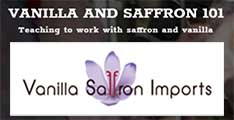Joe Appel. If I’ve got half a chance of convincing you to try it, a hot day in August offers the best shot.
Fun things first: Txakolina is pronounced “chah-kuh-leena.” It is also sometimes called Txakoli (“chah-kuh-lee”). Neither form seems much more or less authentic than the other, and in some areas it is spelled Chacolí. Such confusion is to be expected in a region – bordering the Atlantic Ocean between the cities of Bilbao and San Sebastian, just east of the Pyrenees mountains separating Spain from France – where four different official languages are spoken.
The spellings are odd, as befits what linguists call a “language isolate” whose origins remain disputed. Xs and Ks and diphthongs predominate, but the hard-edged words are quite easy for Anglophones to speak. I’d rather say “Txakolina” or “Bizkaiko” 100 times fast than “sauvignon blanc” or “shiraz.”
The wines are onomatopoetic, their character matching the bip-chunk-bam cadence of the place and winery names. We are in the realm of high acidity, thin edges, piercing minerals. These wines penetrate the palate, with constant acceleration.
Imagine sauvignon blanc without the aromatic ferocity, or grüner veltliner with less green-leaf and more smoked salt, or Muscadet with the volume cranked. Txakolina’s chassis is stripped-down: clean lines, firm seats, 220 volts, no oak, no fat. It’s thrilling the way a high-wire act is thrilling, the inessential left in the locker room. Velveteen devotees of conventionally vinified chardonnay, viognier, marsanne or other softer varietals ought to steer clear.
For the rest of us, Txakolina is killer. Trained professionals, or those who usually fail comically to mimic them, often pour the wines from on high with an outstretched arm, to emphasize the slight carbonation but also just to make the whole experience more of a party. Here’s the picture: a bunch of people in a room, streaming arcs of slightly fizzy wine into glasses and onto the floor, laughing, oohing, shoving salty snacks into their mouths between big gulps. That’s how to drink Txakolina. It’s also sort of what the wine feels like as you taste; there’s that much action.
A bit more soberly, though, the wines exhibit so much distinctive character that to think of them as only a party would be unfair. In fact, a little bit of what I like about Txakolina is that the prices are a tad high. I’ve drunk a few without knowing the price and thought, “That’s a fun, electric wine; I’d pay $12 for it easily,” and then I learn that it’s $19. The trick is finding the ones that are truly worth it, and I’m happy to report that there are several.
Within the Txakoli region, there are several D.O.s (denominación de origen): Getariako, the oldest and largest; Arabako, the smallest; and Bizkaiko, perhaps the most revered. Cantabria and Burgos, outside the zone, produce the wines as well.
The grape is usually hondarrabi zuri, though the reds (yes!) use hondarrabi beltza and the rosés use both. The Txakoli zone, nestled up in the Bay of Biscay, is anomalously wet, cool and green for Spain, with average rainfall more than 50 inches. This makes it similar to Portugal’s Vinho Verde to the west. The connection is more than geographic and climatological: I think those Portuguese wines are Txakolina’s closest analogue. Maybe if Vinho Verde occasionally snorted cocaine.
The natural food pairings are similar, too. Oysters are heavenly with Txakolina, as are marinated anchovies, olives, cured meats, simple white fish lightly floured and fried, summer salads and hard sheep’s milk cheeses. The alcohol is almost always low (though not as low as Vinho Verde’s standard), so pour heavy.
Consensus dictates that you should drink these wines only in the year of release, after which they lose their verve. As usual, consensus is dumb-dumb. It implies two wrong-headed notions: that the wine can’t age, and that it doesn’t develop over time in the glass and opened bottle. My personal tasting notes on each of the wines mentioned below cover two to three days and vary dramatically in that time period. Your bottle probably won’t last that long, but keep this added benefit in mind.
As for a few years of age, a well-made Txakolina wine, with that firm wet-rock basis, develops quite nicely over a couple of years, as do wines from other regions mentioned above where youthful energy is mistaken for drink-now urgency. With Txakolina, Muscadet, grüner and more, the citrus-fruit notes recede, the saline intensity calms, and a touch of soft flesh emerges. Feel free to drink them through the fall and to pack away a few bottles after Labor Day with your white linen shirts, for next summer and beyond.
Ameztoi Getariako Txakolina 2014, $20. A relatively soft wine, probably due in part to the fact that, though white, it is a blend of both the zuri (Basque for “white”) and beltza (“black”) varietals of hondarrabi. It’s floral, almost like pinot blanc, with a similar mountain wildflower freshness. The wine’s distinctive effervescence and nut-skin bitterness is thrilling.
Ameztoi also makes a red wine, the Stimatum 2013, $20, that has expanded my already growing list of serious red wines that happen to be sparkling and happen to be perfect well-chilled. Glowing-red in color, with bright cherry fruit that bursts from the glass, the wine grips your mouth in a loving hug and doesn’t let go. Like a sparkling gamay or Lambrusco, it is a slam dunk for almost any meal set before it.
Señorio de Astobiza Arabako Txakoli 2014, $19. Although this wine’s general flavors are similar to the Ameztoi’s, it utterly lacks effervescence; for some, the mark of a more serious Txakoli expression. Upon first taste, I sensed very bright fruit (not common in these wines) along with the lemons, somewhat eased up texturally due to the lack of spritz. Overnight it transformed into something like Petit Chablis: that clean oyster-liquor, salty and chalky, opened up and far more aromatic than on the first day.
Ametza Arabako Txakolina 2013, $21. First off, note the vintage, the current release a year older than the norm. Then, appreciate this as high-standard Arabako: more structured, longer finish, much more texturally intricate than usual. On the second day I drank it, it was expressing on an excitingly earthy level, working hard enough to sweat a little, with a lovely touch of honey at the end. I have drunk this wine through many years, and each vintage is a very new wine; this is my favorite so far.
Maddy Bizkaiko Txakoli 2014, $26. This is utterly incredible, and along with the Ulibarri mentioned below, a clear outlier. The flavor notes are what are most extraordinary: Asian spices and exotic fruits, delivered to envelop the mouth rather than the usual surgical incision. Yes, it’s expensive in an already dear category. Bring it to the next dinner party where you want to shock someone who appreciates wine and thinks he knows a lot about it. If you run a restaurant beverage program, feature it on your list and make sure your savviest clients try it out.
Ulibarri “Artzaiak” Bizkaiko Txakolina 2013, $20. This is easily the most insane Txakolina I have ever drunk, made by shepherds (“artzaiak” in Basque) and sheep-cheesemakers in Bizkaiko. Rare for such a wet zone (and possibly unique in all of Txakoli), the grapes are farmed organically. Also uncommon, while most modern Txakoli wine is fermented in stainless steel tanks, the “Artzaiak” is fermented in used French oak barrels, aged on the lees with almost daily battonage (stirring).
Only a touch of sulfur is added to the finished wine, which is bottled without fining or filtration. The battonage and barrel fermentation introduce oxygen into the wine, allow all the carbonation to dissipate, and render the texture dramatically more complex. This wine is a launch far past the usual stratosphere of Txakolina, although it took the second day of tasting for me to realize it, and to love it.
Again, for me Chablis is the reference, though this time maybe aged Premier Cru. Enormously mineral, extraordinarily rich and respiratory, it seems to erupt from underground. I’m sure it will gain in fascination over years. And it will prove that this region has the expressive terrain and adventurous winemaking to remain important in the future.
Joe Appel is the wine buyer at Rosemont Market. He can be contacted at: soulofwine.appel@gmail.com



 Enviar a un amigo
Enviar a un amigo Añadir comentario
Añadir comentario








